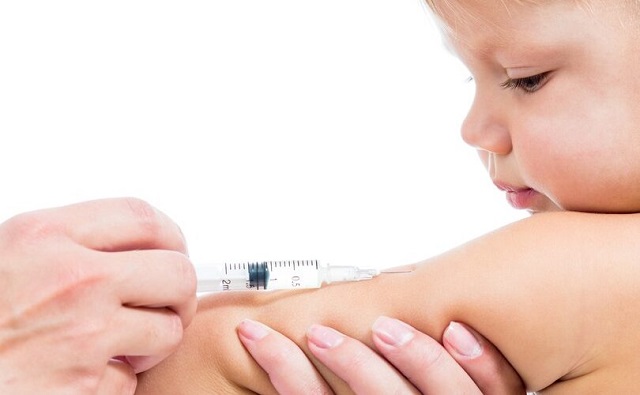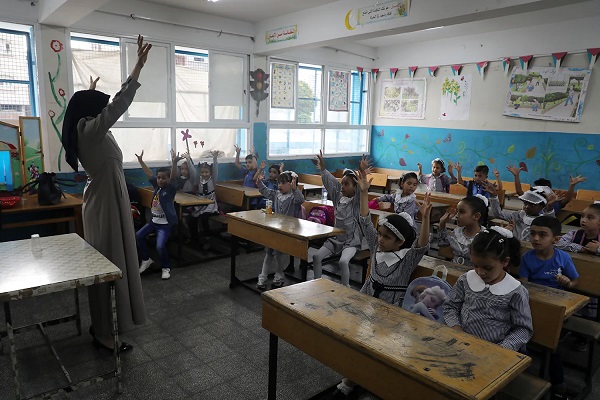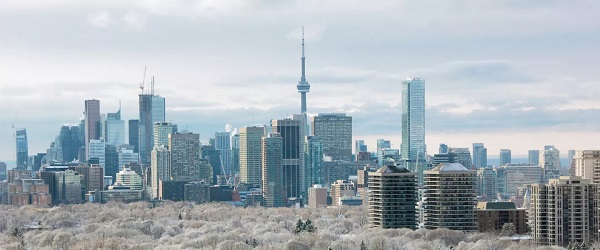Business
Understanding the Nature of Canada’s Fiscal and Economic Challenges

From the Fraser Institute
By Jake Fuss and Jason Clemens
” between 2016 and 2019 (pre-COVID), growth in per-person GDP (inflation-adjusted) was an anemic 0.9 percent. According to one study, among the last five pre-recession periods in Canadian history, the Trudeau period (again, 2016 to 2019) recorded the weakest economic growth “
The Trudeau government was first elected in 2015 based in part on a new approach to government policy, which promised greater prosperity for Canadians based on short-term deficit spending (totaling $25.1 billion over three years), lower taxes for most Canadians (except higher-income earners), and a more active approach to economic development (LPC, 2015). This new policy direction stood in stark contrast to the consensus of the previous 20 years (Clemens and Palacios, 2017). The result has been a marked deterioration in the country’s finances, economic stagnation, and a collapse in business investment. If Canada is to restore its fiscal and economic health, Ottawa must enact fundamental policy reform.
Government spending, taxes, and debt
The Trudeau government has markedly increased spending to finance both new programs and increases in existing programs. Federal spending (excluding interest costs) increased from $256.3 billion in 2014-15 (the year before the Trudeau government took office) to $448.2 billion in 2022-23 (an increase of 74.9 percent) (Canada, 2023a) and a projected $453.0 billion in 2023-24 (Canada, 2023b). Not surprisingly, COVID-related spending contributed to increases in 2019-20 to 2021-22. But in 2022-23 and thereafter, there is no COVID-related spending.
The federal government has used tax increases and large increases in borrowing to finance these spending increases. In 2016, the federal government increased the top personal income tax rate imposed on entrepreneurs, professionals , and business owners from 29 percent to 33 percent. Consequently, the combined top personal income tax rate (federal and provincial) now exceeds 50 percent in eight provinces (with the remaining provinces only slightly below 50 percent) and in 2022 Canada had the 5th highest tax rate out of 38 OECD countries. This represents a serious competitive challenge for Canada’s ability to attract and retain entrepreneurs, investors, skilled professionals, and businesses.
And while the Trudeau government reduced the middle personal income tax rate, it also eliminated several tax credits. The combination of the two policy changes means that 86 percent of middle-income families now pay higher personal income taxes (Palacios et al., 2022). If the analysis also includes increases to the Canada Pension Plan contribution rate, almost all Canadians now pay higher taxes.

The Trudeau government also borrowed to finance its new spending. Figure 1 contrasts the originally
planned deficits with the actual deficits incurred by the Trudeau government (excluding COVID-related
spending) from 2016-17 to 2022-23. The actual borrowing exceeds the originally planned borrowing
every year (except 2021-22), often by significant margins, due to the government’s inability to control
spending growth.
The string of deficits means federal debt (measured as gross debt) has ballooned to $1.9 trillion
(2022-23) and is projected to reach $2.4 trillion by 2027/28, fueling a dramatic growth in interest costs,
which have grown by 53.2 percent (inflation-adjusted) between 2014/15 and 2023/24 and will reach
a projected $46.5 billion in 2023/24. Interest costs now consume substantial revenue that is then unavailable for government services or tax reduction.
Simply put, Trudeau government policy changes have produced large increases in government spending, taxes, and borrowing. Unfortunately, these policy changes have not resulted in a more robust and vibrant economy.
Weak economic growth and collapsing business investment
The broadest measure of living standards is GDP per person, which calculates the total value of all goods and services produced in the economy in a given year (adjusted by the population). As illustrated in Figure 2, between 2016 and 2019 (pre-COVID), growth in per-person GDP (inflation-adjusted) was an anemic 0.9 percent. According to one study, among the last five pre-recession periods in Canadian history, the Trudeau period (again, 2016 to 2019) recorded the weakest economic growth (Clemens, Palacios, and Veldhuis, 2021). Another study found that Canada’s per-person GDP growth from 2013 to 2022 was the weakest on record since the 1930s (Cross, 2023). And per-person GDP in 2022 (inflation-adjusted) had still not recovered from the pandemic losses and was basically stagnant at 2018 levels (see figure 2).
Prospects for the future, given current policies, are not encouraging. The OECD projects that Canada will record the lowest rate of per-person GDP growth among 32 advanced economies from 2020 to 2030 and from 2030 to 2060(OECD, 2021).Countries such as Estonia, South Korea, and New Zealand are expected to vault past Canada and achieve higher living standards by 2060.

According to a recent analysis, Canada’s economic growth crisis is due in part to the decline in business investment, which is critical to increasing living standards because it equips workers with tools and technologies to produce more higher-quality goods and services. This, in turn, fuels innovation and improved productivity (Cross, 2023). There are obvious explanations for the decline in business investment including regulatory barriers, particularly related to the energy and mining sectors (Globerman and Emes, 2021), and government deficits, which imply tax increases in the future, dampening investment today. Business investment (inflation-adjusted), excluding residential construction, has declined by 1.8 percent annually since 2014.
According to a 2023 study (Hill and Emes, 2023), between 2014 and 2021, business investment per worker (inflation-adjusted, excluding residential construction) decreased by $3,676 (to $14,687) compared to growth of $3,418 (to $26,751) in the United States. Put differently, in 2014, Canadian
businesses invested 79 cents per worker for every dollar invested in the United States. By 2021, that level of investment had declined to just 55 cents per worker.
Moreover, the amount of investment in Canada by foreigners has decreased while the amount of investment by Canadians outside of the country has increased. In 2008, the two levels were roughly comparable—$65.7 billion in foreign direct investment (FDI) in Canada vs. $84.6 billion in investment by Canadians outside of the country. However, a sizeable change began in 2015; by 2022, the amount of FDI ($64.6 billion) was significantly smaller than the amount of investment by Canadians outside the country ($102.3 billion).
Finally, while Canada’s labour market has consistently demonstrated its strength and resilience, the labour market numbers hide some concerning trends. For example, between February 2020 (when the pandemic began) and June 2023, private-sector job creation (net) was fairly weak at 3.3 percent compared to 11.8 percent job growth in the government sector (Eisen, Ryan and Palacios, 2023). In other words, the recovery and growth in the private sector following the pandemic has not been as strong as expected.
Conclusion: The Path Forward
There is reason for optimism, however, since many of Canada’s challenges are of the federal government’s own making. The Chrétien Liberals in the 1990s faced many of the same challenges that we do today (Veldhuis, Clemens, and Palacios, 2011). By shifting the focus to more prudent government spending, balanced budgets, debt reduction, and competitive tax rates, the Chrétien Liberals—followed in large measure by the Harper Tories—paved the way for two decades of prosperity when Canada outperformed other OECD countries on economic growth, job-creation, and business investment.
To help foster greater prosperity for Canadians today, the federal government can learn from the Chrétien Liberals, and the Harper Tories. The rest of this series identifies policy options that can increase living standards for Canadians by repairing federal finances, improving tax competitiveness, and lowering economic barriers. These reforms could help build a more prosperous country through the creation of good jobs which would lead to rising incomes for Canadians.
Authors:
Business
The EU Insists Its X Fine Isn’t About Censorship. Here’s Why It Is.

Europe calls it transparency, but it looks a lot like teaching the internet who’s allowed to speak.
|
When the European Commission fined X €120 million on December 5, officials could not have been clearer. This, they said, was not about censorship. It was just about “transparency.”
They repeat it so often you start to wonder why.
The fine marks the first major enforcement of the Digital Services Act, Europe’s new censorship-driven internet rulebook.
It was sold as a consumer protection measure, designed to make online platforms safer and more accountable, and included a whole list of censorship requirements, fining platforms that don’t comply.
The Commission charged X with three violations: the paid blue checkmark system, the lack of advertising data, and restricted data access for researchers.
None of these touches direct content censorship. But all of them shape visibility, credibility, and surveillance, just in more polite language.
Musk’s decision to turn blue checks into a subscription feature ended the old system where establishment figures, journalists, politicians, and legacy celebrities got verification.
The EU called Musk’s decision “deceptive design.” The old version, apparently, was honesty itself. Before, a blue badge meant you were important. After, it meant you paid. Brussels prefers the former, where approved institutions get algorithmic priority, and the rest of the population stays in the queue.
The new system threatened that hierarchy. Now, anyone could buy verification, diluting the aura of authority once reserved for anointed voices.
Reclaim The Net is sustained by its readers.
Your support fuels the fight for privacy, free speech and digital civil liberties while giving you access to exclusive content, practical how to guides, premium features and deeper dives into freedom-focused tech.
Become a supporter here.
However, that’s not the full story. Under the old Twitter system, verification was sold as a public service, but in reality it worked more like a back-room favor and a status purchase.
The main application process was shut down in 2010, so unless you were already famous, the only way to get a blue check was to spend enough money on advertising or to be important enough to trigger impersonation problems.
Ad Age reported that advertisers who spent at least fifteen thousand dollars over three months could get verified, and Twitter sales reps told clients the same thing. That meant verification was effectively a perk reserved for major media brands, public figures, and anyone willing to pay. It was a symbol of influence rationed through informal criteria and private deals, creating a hierarchy shaped by cronyism rather than transparency.
Under the new X rules, everyone is on a level playing field.
Government officials and agencies now sport gray badges, symbols of credibility that can’t be purchased. These are the state’s chosen voices, publicly marked as incorruptible. To the EU, that should be a safeguard.
The second and third violations show how “transparency” doubles as a surveillance mechanism. X was fined for limiting access to advertising data and for restricting researchers from scraping platform content. Regulators called that obstruction. Musk called it refusing to feed the censorship machine.
The EU’s preferred researchers aren’t neutral archivists. Many have been documented coordinating with governments, NGOs, and “fact-checking” networks that flagged political content for takedown during previous election cycles.
They call it “fighting disinformation.” Critics call it outsourcing censorship pressure to academics.
Under the DSA, these same groups now have the legal right to demand data from platforms like X to study “systemic risks,” a phrase broad enough to include whatever speech bureaucrats find undesirable this month.
The result is a permanent state of observation where every algorithmic change, viral post, or trending topic becomes a potential regulatory case.
The advertising issue completes the loop. Brussels says it wants ad libraries to be fully searchable so users can see who’s paying for what. It gives regulators and activists a live feed of messaging, ready for pressure campaigns.
The DSA doesn’t delete ads; it just makes it easier for someone else to demand they be deleted.
That’s how this form of censorship works: not through bans, but through endless exposure to scrutiny until platforms remove the risk voluntarily.
The Commission insists, again and again, that the fine has “nothing to do with content.”
That may be true on a direct level, but the rules shape content all the same. When governments decide who counts as authentic, who qualifies as a researcher, and how visibility gets distributed, speech control doesn’t need to be explicit. It’s baked into the system.
Brussels calls it user protection. Musk calls it punishment for disobedience. This particular DSA fine isn’t about what you can say, it’s about who’s allowed to be heard saying it.
TikTok escaped similar scrutiny by promising to comply. X didn’t, and that’s the difference. The EU prefers companies that surrender before the hearing. When they don’t, “transparency” becomes the pretext for a financial hammer.
The €120 million fine is small by tech standards, but symbolically it’s huge.
It tells every platform that “noncompliance” means questioning the structure of speech the EU has already defined as safe.
In the official language of Brussels, this is a regulation. But it’s managed discourse, control through design, moderation through paperwork, censorship through transparency.
And the louder they insist it isn’t, the clearer it becomes that it is.
|
|
|
|
Reclaim The Net Needs Your
With your help, we can do more than hold the line. We can push back. We can expose censorship, highlight surveillance overreach, and amplify the voices of those being silenced.
If you have found value in our work, please consider becoming a supporter.
Your support does more than keep us independent. It also gives you access to exclusive content, deep dive exploration of freedom focused technology, member-only features, and practical how-to posts that help you protect your rights in the real world.
You help us expand our reach, educate more people, and continue this fight.
Please become a supporter today.
Thank you for your support.
|
Business
Loblaws Owes Canadians Up to $500 Million in “Secret” Bread Cash

Yakk Stack
(Only 5 Days Left!) Claim Yours Before It’s GONE FOREVER
Hey, all.
Imagine this…you’re slicing into that fresh loaf from Loblaws or just making a Wonder-ful sammich, the one you’ve bought hundreds of times over the years, and suddenly… ka-ching!
A fat check lands in your mailbox.
Not from a lottery ticket, not from a side hustle – from the very store that’s been quietly owing you money for two decades of illegal price fixing.
Sound too good to be true?
It’s real.
It’s court-approved.
And right now, on December 7, 2025, you’ve got exactly 5 days to grab your share before the door slams shut. Don’t let this slip away – keep reading, feel that spark of possibility ignite, and let’s get you paid.
Back in 2001, you were probably juggling work, kids, or just surviving on that weekly grocery run. Little did you know, while you were reaching for the President’s Choice white bread or those golden rolls, Loblaws and their cronies were playing a sneaky game of price-fixing. They jacked up the cost of packaged bread across Canada – every loaf, every bun, every sneaky sandwich slice. For 20 years. From coast to coast to coast.
And now…the courts have spoken. $500 million in settlements to make it right. That’s not pocket change – that’s your money, recycled back into your life.
Given the number of people who will be throwing in a claim…this ain’t gunna be life-changing cash…but also, given the cost of food in Canada, it’s better than sweet fuck all, which you will receive by NOT doing this.
If you’re a Canadian resident (yep, that’s you, unless you’re in Quebec with your own sweet deal), and you’ve ever bought bread for your family – not for resale, just real life – between January 1, 2001, and December 31, 2021… you’re in.
No receipts needed.
No fancy proofs.
Just you, confirming your story, and boom – eligible.
Quick check: Were you under 18 back then?
Or an exec at Loblaw?
Nah, skip it.
But for the rest of us everyday schleps…Jackpot.
Again…the clock’s ticking on this.
Claims opened on September 11, 2025, and slam shut on December 12, 2025.
That’s this Friday.
Payments roll out in 2026, 6-12 months later, straight to your bank or mailbox.
Here’s what you need to do…
- Breathe deep, click → HEREQuebec frens →HERE
- 10 second form that’s completed by your autofill…30 seconds off of a mobile device.
- Hit submit and wait for that sweet cash to hit your account.
Again…this won’t be life saving money and most certainly ain’t gunna hit your account before Christmas.
And before you go out an Griswald yourself into a depost on pool in the backyard…you may only end up with enough cash for the Jam-of-the-Month…the gift that truly does give, all year round…just be a little patient.
If you end up with a couple of backyard steaks in time for summer…
Some treats for the children or grandchildren…
Maybe just a donation to the foodbank…
This is what’s owed to you. Your neighbors. Friends. Family.
Take advantage!
-

 Focal Points2 days ago
Focal Points2 days agoPharma Bombshell: President Trump Orders Complete Childhood Vaccine Schedule Review
-

 Business1 day ago
Business1 day agoWhy Does Canada “Lead” the World in Funding Racist Indoctrination?
-

 Alberta2 days ago
Alberta2 days agoPremier Smith: Canadians support agreement between Alberta and Ottawa and the major economic opportunities it could unlock for the benefit of all
-

 Automotive2 days ago
Automotive2 days agoTrump Deals Biden’s EV Dreams A Death Blow
-

 Opinion2 days ago
Opinion2 days agoCountry music star Paul Brandt asks Parliament to toughen laws against child porn
-

 Automotive2 days ago
Automotive2 days agoCanada’s EV Mandate Is Running On Empty
-

 Media1 day ago
Media1 day agoThey know they are lying, we know they are lying and they know we know but the lies continue
-

 Focal Points1 day ago
Focal Points1 day agoThe West Needs Bogeymen (Especially Russia)













